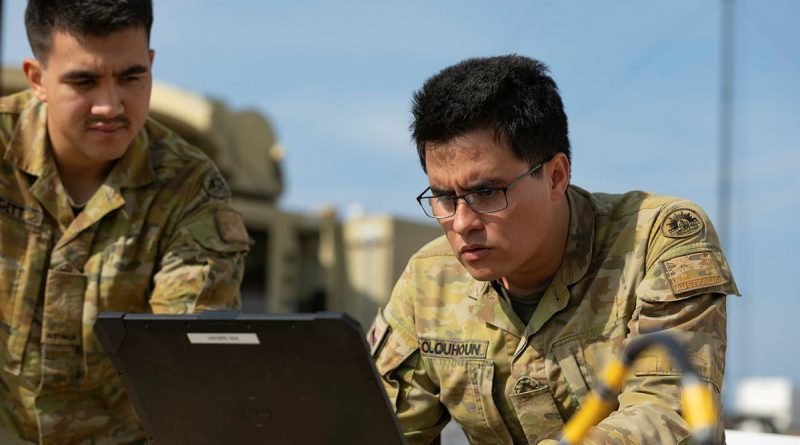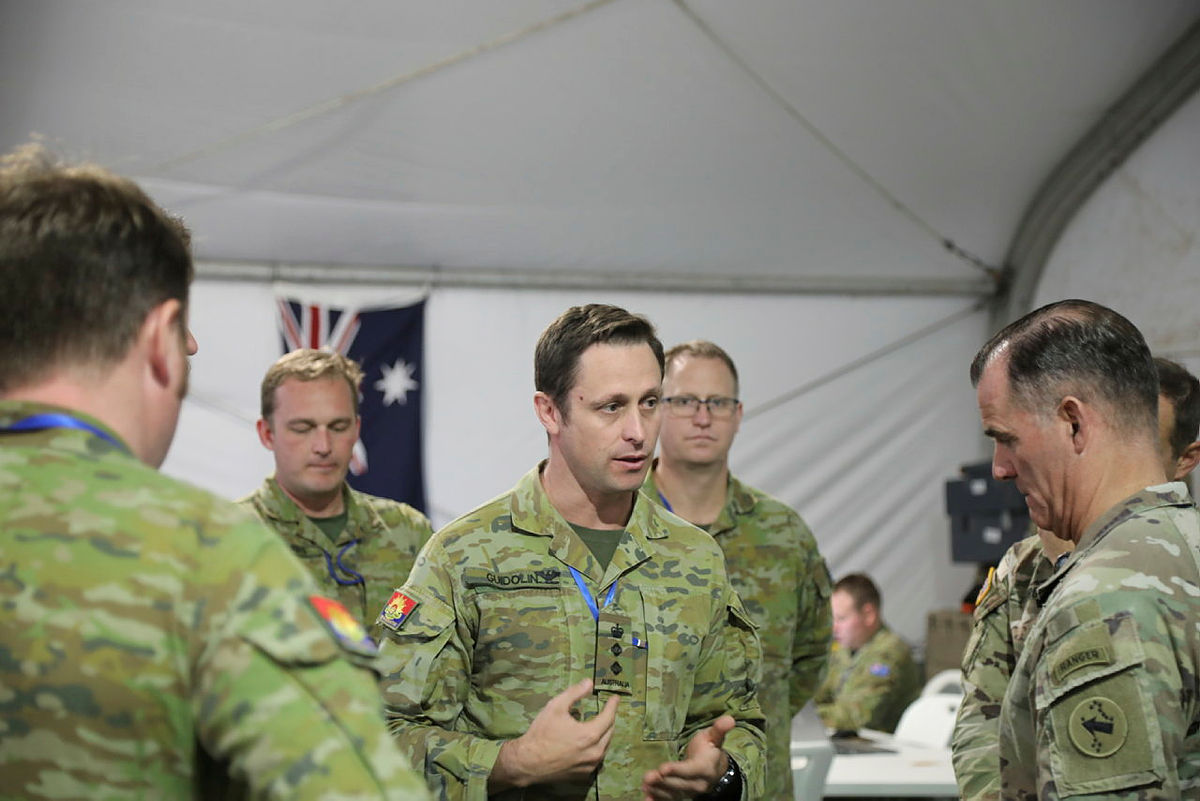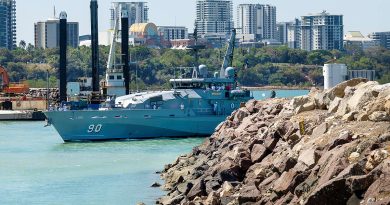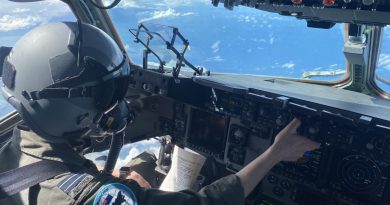Diggers experiment to innovate in US

It’s not often soldiers feel it’s okay to fail at work – and they’re certainly not encouraged to.
CAPTION: Signallers Harley Leggett and Lachlan Colquhoun set up a communications tower during Project Convergence Capstone 4 at Camp Pendleton, California. Story by Lieutenant Colonel Carrie Robards. Photo by US Army Specialist Marquis McCants.
While they might be used to exercising to certify, experimentation is something new to the more than 100 Australian soldiers who took part in this year’s Project Convergence, an experimentation campaign led by the US Army’s Futures Command in California.
The campaign – a learning process conducted over many years – aims to test systems and processes to determine which technology is worth developing.
Lieutenant Colonel Roger Pilton, Australian Army liaison officer at the US Army’s Network Cross-Functional Team, said experimental learning helped innovation to make personnel safer.
“Despite our technical focus, we must always remember that at the end of all this technology is a commander, leading our most precious asset, our people. Our mission is to ensure that commander has the information they need at the right place and the right time to ensure they can make better, faster decisions,” Lt-Col Pilton said.
“We seek to use the latest hardware and software to make our systems simpler, more intuitive, more secure and more robust for our soldiers, sailors, aviators, guardians, marines and mission partners.
“These technology experiments help us reduce complexity, enabling our most critical asset, which is the workforce, to do what they do to deliver the best results on the field.”
Experimentation activities like Project Convergence give participating nations the opportunity to check their priority focus areas against real mission requirements.
What comes from the success or failure of that experiment produces valuable data to drive effective change.
About 120 Australian soldiers participated at this year’s iteration of the activity – Project Convergence Capstone Four (PC-C4) – conducted in the US from February 23 to March 20.
They worked as part of a coalition force to examine how systems interacted with each other and shared information to facilitate machine-fast sensor-to-shooter response.
The connection of tactical networks between coalition partners provides data to enable effects to converge across all warfighting domains – land, air, sea, cyber and space.
If things don’t go to plan in experimentation, it provides a lesson on what to improve on, and indicates what technology is worth pursuing to improve outcomes – including commercial-off-the-shelf options.
Director Multi Domain Strike Program and Commander of the Australian PC-C4 contingent, Colonel Casey Guidolin, said long-range fires were a significant Australian contribution to PC-C4.
CAPTION: Commander of the Australian contingent of Project Convergence Capstone Four, Colonel Casey Guidolin, briefs the US Army Pacific Commanding General, General Charles Flynn at Camp Pendleton, California.
“The Australian Defence Force’s ability to precisely strike targets at longer ranges is one of the six priorities of the Defence Strategic Review,” Col Guidolin said.
“Defence is acquiring a suite of long-range capabilities that contribute to our deterrence posture, including HIMARS and PrSM [precision strike missile], and 16 Regiment successfully test-fired NASAMS late last year.
“In addition to acquiring new capabilities, it is essential that we work with our partners and allies for lessons learned, and to share information so we can effectively engage targets with these highly capable strike systems.
“This activity has gone really well and I am very proud of the Australian contingent who have done a fantastic job on this activity.
“We are well positioned for future success in our offensive and defensive strike capabilities working shoulder-to-shoulder with the US and like-minded partners.”
PC-C4 comprised more than 4000 service members and civilians across the US military – including the US Army, US Marine Corps, US Navy, US Air Force and US Space Force – as well as like-minded international militaries, including the UK, New Zealand, Canada, France and Japan.
With the expectation of future battles becoming increasingly complex, Project Convergence seeks to shape responses to combat an ever-changing threat environment.
PC-C5 is set to be held in the United States in 2025.
.
.

.
.






